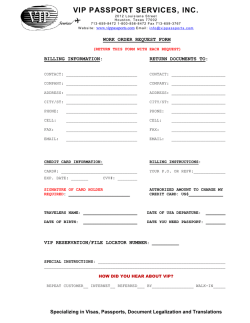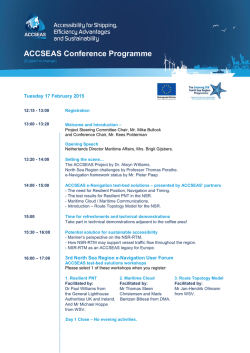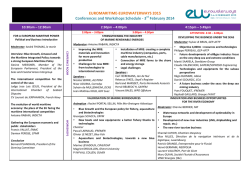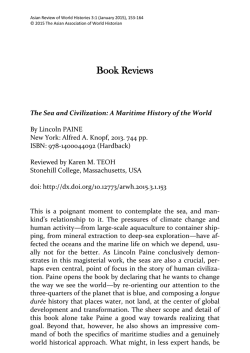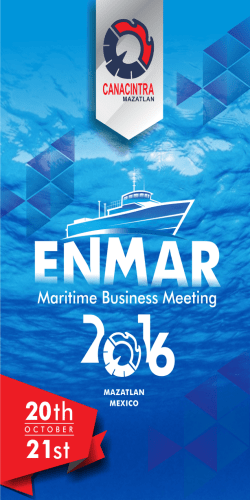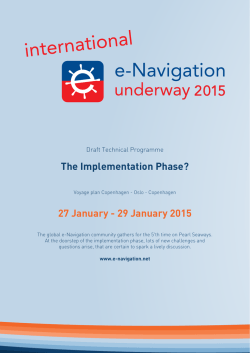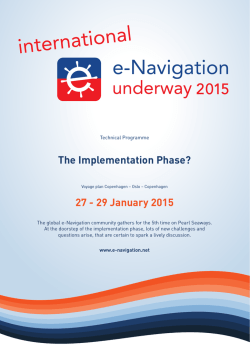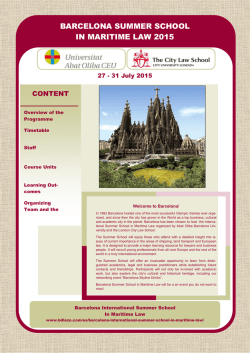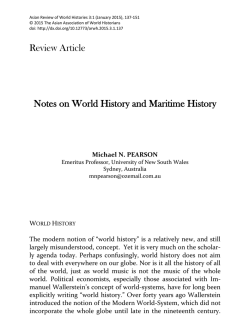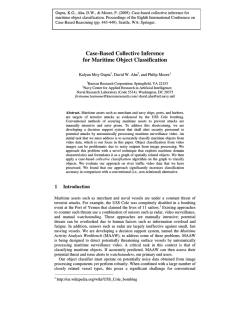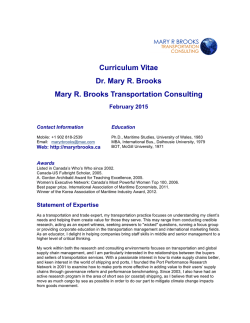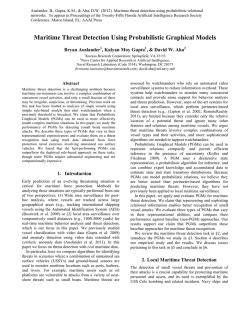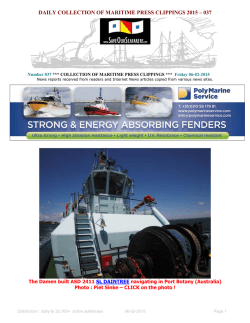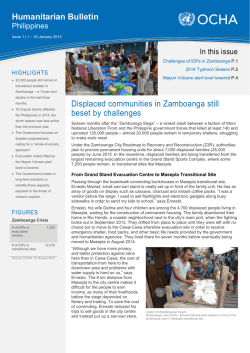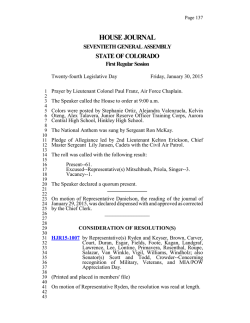
Richard Uyehara Ritual WMU Alumni Conf. Myanmar 27
2/2/15 Maritime Education and Training System in the Philippines Introduction The Philippines is a major supplier of certified seafarers in the international seaborne trade, providing more than 25% of the crew that manage, operate and support the labor requirements of international marine vessels. 1 2/2/15 The STCW Convention 1978 as amended in 1995 and in 2010 made a large impact on MET systems in the Philippines. Competency based learning is implemented European Maritime Safety Agency (EMSA) is ensuring that the Philippine Maritime Education and Training complies with STCW Convention and Code as amended. Since 2006 - 2013, EMSA made series of audit inspection as part of the regular reassessment as well as follow up inspection and found series of serious deficiencies. As a result, Republic Act No. 10635 made and approved on March, 2014 this will give Maritime Industry Authority (MARINA) the authorithy to have a close monitoring of the MET Systems. 2 2/2/15 Maritime Higher Education Institution (MHEI) is monitored and evaluated by CHED and MARINA to determine compliance with STCW On-going authorized programs are regularly monitored and those found to be non-compliant are ordered for immediate closure or phase out. International attention is now focused on the capacity of the Philippines to continuously supply competent seafarers who meet the STCW as amended in 2010. 3 2/2/15 4 2/2/15 PROPOSED FUND FOR MARITIME EDUCATION DEVELOPMENT AND ENHANCEMENT (F-MADE) Purpose The Fund for Maritime Education Development and Enhancement (F-MADE) shall be used exclusively for enhancing the quality and competitiveness of qualified MHEIs in the country in order to enable the continuous production of highly competent officers for the Philippine and international shipping industry in accordance with the STCW Convention as amended and the STCW Code. PROPOSED FUND FOR MARITIME EDUCATION DEVELOPMENT AND ENHANCEMENT (F-MADE) Utilization ! t he modernization of facilities and teaching resources; ! u pgrading of faculty competencies; ! e nhancing research and development capacity; and ! s upport for shipboard training. 5 2/2/15 FUND ALLOCATION Modernization of facilities and teaching resources 30% Upgrading of faculty competencies 40% Enhancement of Research and Development Capability 10% Support for Shipboard Training 20% Total 100% UTILIZATION GUIDELINES ! T he preliminary considerations in the provision of grants include the following: Application of the QA framework Perfromance of the MHEIs and the graduates High compliance with STCWcompliant CHED PSGs and accreditation levels Good reputation and potential 6 2/2/15 PROPOSED SOURCES ! P ortion of the CHED Higher Education Development Fund maintained in the Bureau of treasury ! S hare of the fees paid by shipping companies and similar entities in Government ! S pecial budgetary allocation of Congress for the purpose ! O thers PROPOSED INITIAL BUDGET ALLOCATION P1B as seed capital P1B as funds available for grants ! C HED further proposes an annual allocation of P500M to sustain the development and support of the maritime education sector. 7 2/2/15 The country benefits tremendously from about 4B dollars of annual remittances of sea-based Overseas Filipino Workers (OFW) or about 22% of total OFW remittances in 2012. Thank you for Your Attention! 8
© Copyright 2026
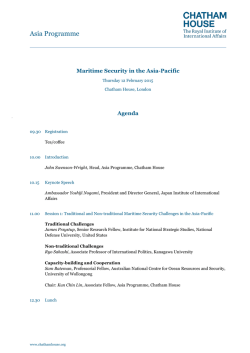
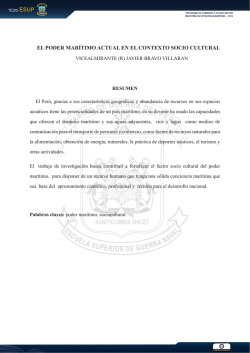
![[Click here and type place and date] - EMSA](http://s2.esdocs.com/store/data/000467641_1-f802c01f4a8923c9324d9c92cefbeb6b-250x500.png)
